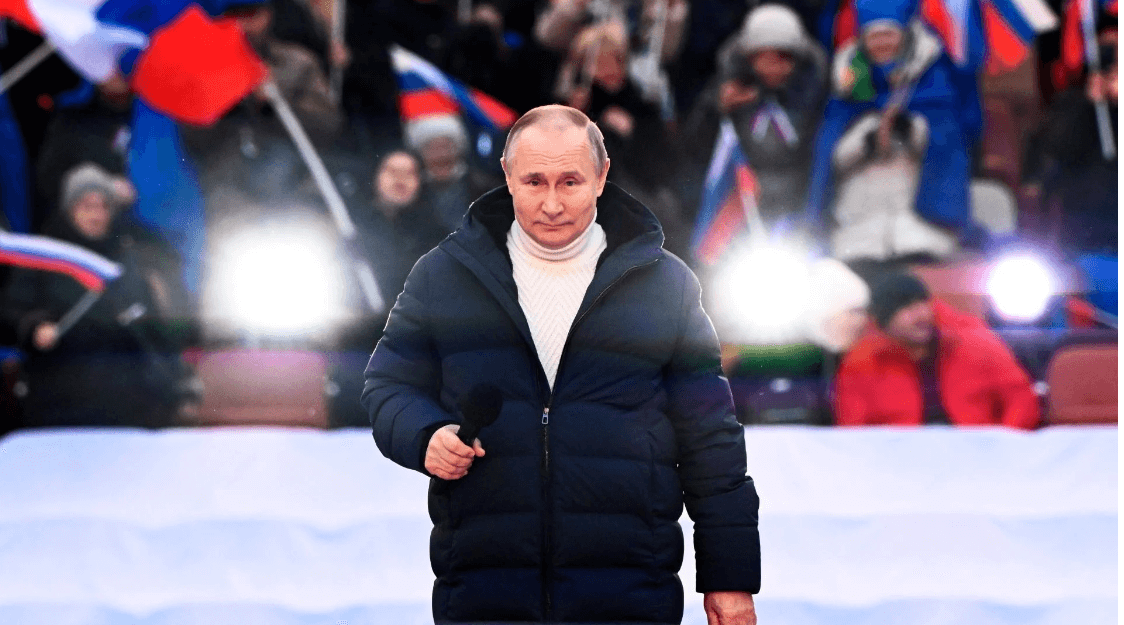Vladimir Putin is refusing to give up without a fight in the Ukraine war. As the West levies more sanctions and expands its financial and military support for Ukraine, the Russian president has dug his heels in even deeper. The latest iteration of Putin’s bravado was his decision to announce a partial mobilisation, a move intended to ensure there is no hiccup in Russia’s war plan. It allows the Russian Defence Ministry to conscript 300,000 civilians from a pool of about two million reservists, the vast majority of whom briefly attended service and received training years ago.
At first glance, the move to replenish Russian troops in Ukraine with close to half a million fresh recruits seems sensible. Especially since Russian military losses have been staggering. Western intelligence agencies estimate that Russia has lost over 60% of the manpower and equipment sent to Ukraine, which has made Russian troops “combat ineffective.” The remaining troops are suffering from low morale and hundreds have reportedly surrendered, despite Putin warning that those who voluntarily enter Ukrainian captivity could be sentenced to up to ten years in prison.
The mobilisation of additional troops is therefore intended to prolong the fighting amid increased Ukrainian counteroffensives, and give strategists in Moscow much-needed breathing space to reassess losses and rework their strategy. It could also help Putin pacify hawkish officials in Moscow, who have been demanding aggressive actions as Russian losses continue to pile up.
On closer inspection, however, the strategy is fraught with a host of problems that are likely to further compound Russia’s difficulties.
Despite talking about defending the “motherland” and Russia’s territorial integrity in his speech announcing the partial mobilisation, Putin’s rallying cry has failed to attract patriotic citizens ready to answer the call of duty. Rather, it has led to widespread protests across Russia. Tens of thousands of Russians from Moscow to distant Dagestan and Siberia have clashed with security forces against forced conscription and around 2,400 protesters have been arrested so far. Around half of Russians are anxious and angry about Putin’s partial mobilisation, and tens of thousands have already fled the country to neighbouring states in fear of being forced to fight. This is in sharp contrast to Putin’s claims that war would unify Russians around a common cause—the reunification of Ukraine with Russia.
Sending civilians to the Russian “meat grinder” in Ukraine would only amplify Moscow’s mounting battlefield losses, which would, in turn, lead to more public opposition to Putin’s war.
However, the world’s third strongest military has been pushed into a corner and appears to have no choice but to enlist and recruit civilians.
Russian losses in Ukraine continue to grow by the day. Ukrainian forces have recaptured several occupied regions recently at lightning speed and continue to launch counteroffensives. The territorial loss is compounded by the rising death toll. Russia has admitted that close to 6,000 of its troops have perished so far and the military is losing almost a battalion a day. Ukraine, however, claims that Russia’s troop deaths are in excess of 61,000.
Additionally, thousands of Russian military equipment worth billions of dollars have been destroyed by Ukraine’s military, including thousands of tanks, artillery systems, armoured vehicles, artillery systems, rocket launchers, aircraft, missiles, warships and boats, and fuel tanks. This has forced it to seek military assistance from countries like Iran and North Korea. All of this has added to public discontent over Russia’s performance, wherein partial mobilisation would only further inflame public anger.
Another issue is how useful civilian reservists would prove to be on the battleground. Russian reservists have not attended military service in years and have very little military training. While officials have promised that new recruits will undergo two weeks of training, experts have argued two weeks is well short of the minimum period of ten weeks required to provide even basic training. Moreover, according to reports, the reserve forces are severely underfunded and underequipped, with several reserves receiving rifles used during the second world war as their only equipment.
Moreover, while partial mobilisation may bolster Putin’s tough guy image domestically, it has attracted more Western sanctions on Russia. The West has also increased its military support to Ukraine. Furthermore, the move has further diminished the already unlikely prospect of negotiations.
All things considered, despite what Putin might have us believe, partial mobilisation is seriously unlikely to help alleviate the Russian military’s woes in Ukraine. It has also laid bare that state propaganda has its limits, and shown that while he may be able to push back against questions over his responsibility for Russia’s economic decline, he cannot expect similar support when he makes civilians directly participate in the war. In fact, the partial mobilisation has exposed to the Russian public that whether or not the Kremlin or Putin publicly admit it, Russia is losing the Ukraine war.
Putin’s Partial Mobilisation Will Only Compound Russia’s Misery
Despite talking about defending the “motherland” and Russia’s territorial integrity, Putin’s rallying cry has failed to attract patriotic citizens ready to answer the call of duty.
October 6, 2022

Putin delivers a speech in Moscow marking the eighth anniversary of the referendum on the state status of Crimea and Sevastopol and its reunification with Russia. IMAGE SOURCE: SERGEY GUNEYEV/AP
